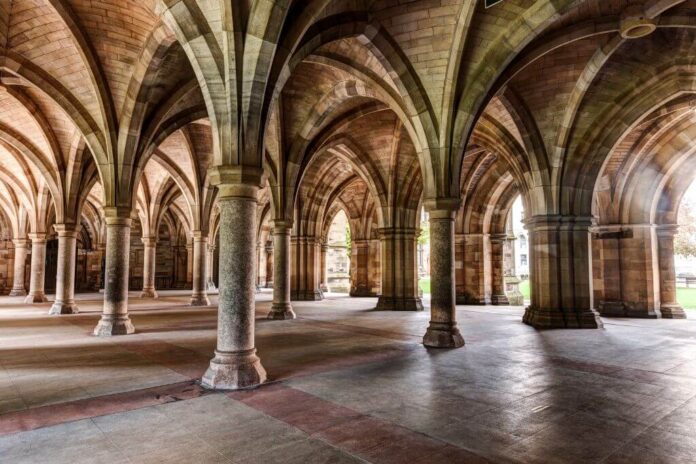From historic icons to quirky stories, these fascinating facts about Glasgow are guaranteed to surprise you.
Affectionately known as Scotland’s ‘dear green place’, Glasgow is Scotland’s beating heart. Known for its colourful character, industrial history and incredible art and music scene, Glasgow has been surprising and delighting visitors for centuries. This is a place where grit and glamour live alongside one another, and where gentrification has not extinguished the rugged charm of Scotland’s most vibrant and cultured city.
We’ve peeled back the layers of history to uncover some of the most intriguing and fascinating historical facts about Glasgow. From fossilised tree trunks to marble monuments, this city is filled with surprises and stories that you might not expect. These are a few of our favourite fun facts about Glasgow!
Glasgow is Scotland’s largest city

With a population of 600,000 people, Glasgow is Scotland’s largest city, and the fifth most-visited city in the United Kingdom. It is home to significantly more people than Scotland’s capital, Edinburgh, partly as a result of its important role as an industrial trading city in the 19th century.
There are trees in Glasgow older than the dinosaurs
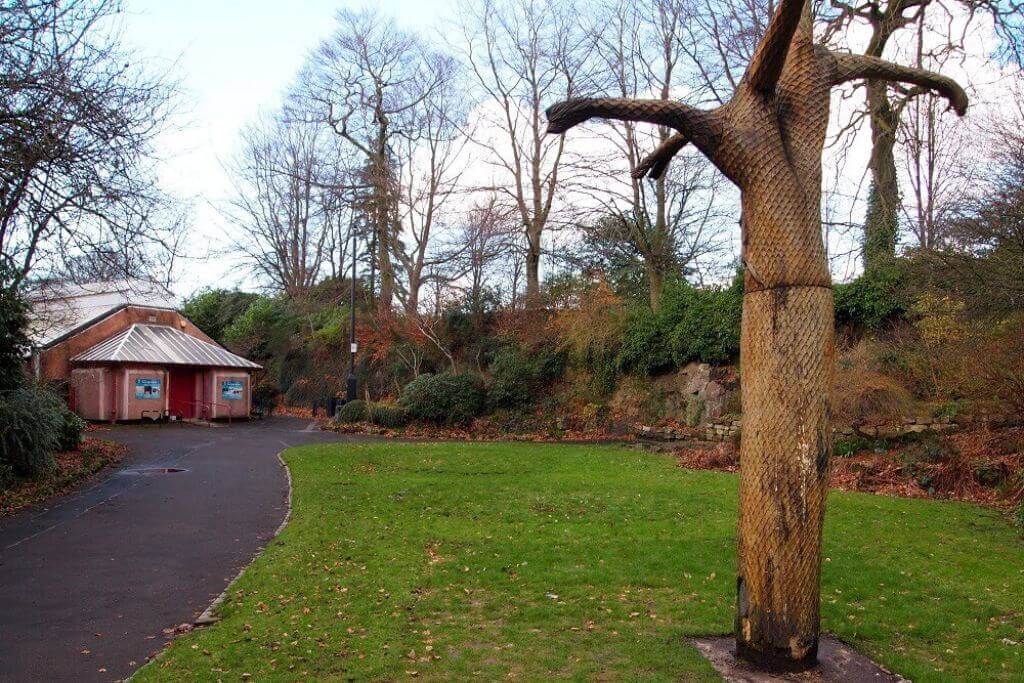
Fossil Grove, in Glasgow’s Victoria Park, is home to eleven very special trees. These fossilised tree stumps date to the Carboniferous Period, making them 330 million years old, twice as old as the dinosaurs. The trees were discovered in 1887 during excavations to make a new park from an old quarry.
It is thought that they would have been Lepidodendron trees, that once grew in a swamp-like environment back when Scotland’s climate was hot and tropical – a far cry from the cold, drizzly weather it is known for today!
Glasgow was founded by Saint Mungo, patron saint of salmon
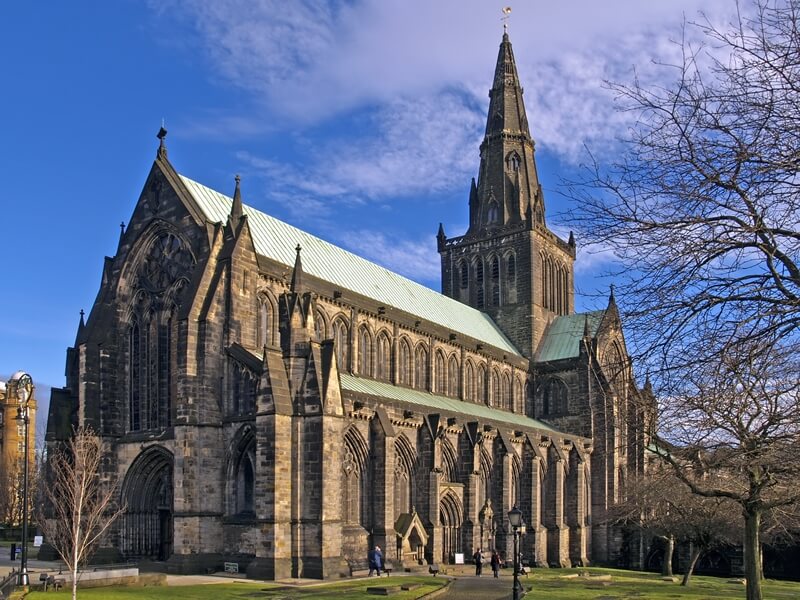
According to local stories, the city of Glasgow was founded by 6th-century Christian missionary St Mungo. However, in reality, there had been a settlement on the banks of the River Clyde since prehistoric times, and even the Romans built a number of outposts in the area now known as Glasgow, designed to keep out the unruly Celts and Picts to the north.
However, Saint Mungo (also called Kentigern) did establish a missionary settlement in what is now the city centre of Glasgow. This small village quickly grew to be an important bishopric and trading centre in the early medieval period.
Glasgow’s City Chambers contain more marble than the Vatican
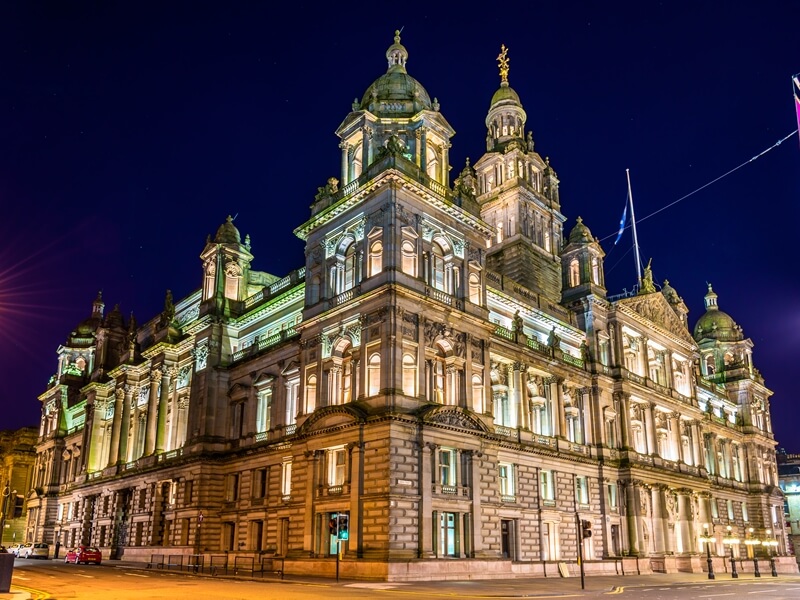
Glasgow’s City Chambers are housed in one of the most impressive buildings in the city, now the home of Glasgow City Council. Enter into this 19th-century monument and you’ll find yourself in a glittering world of opulence.
It is best known for its staggering marble staircase, which forms the centrepiece of the building and is the largest of its kind in Europe. The magnificent chambers look so much like the Vatican that they are often used as a location for films about the papacy! The dazzling Carrera stone was originally imported from Italy, and the chambers were designed by the architect William Young.
Glasgow’s underground railway system is known as ‘The Clockwork Orange’

Glasgow’s subway system is the third-oldest underground train system in the world, and began to welcome passengers in 1896. The bright orange carriages and regular service mean that it is often dubbed ‘The Clockwork Orange’.
Glasgow is home to the world’s first ultrasound machine
Glasgow has historically been a centre for science, art and learning, and the fabulous museums across the city are littered with artistic, cultural and scientific treasures. Of these, one of the most famous is the world’s first ultrasound machine, which was developed and first used in Glasgow in the 1950s.
This remarkable invention has transformed women’s lives ever since, and can be seen today at the Hunterian Museum in the University of Glasgow. If you’re interested in finding about more facts about Scotland’s scientific history, head to the Glasgow Science Centre, where you’ll find some state-of-the-art interactive exhibits!
Chicken tikka masala was invented in Glasgow
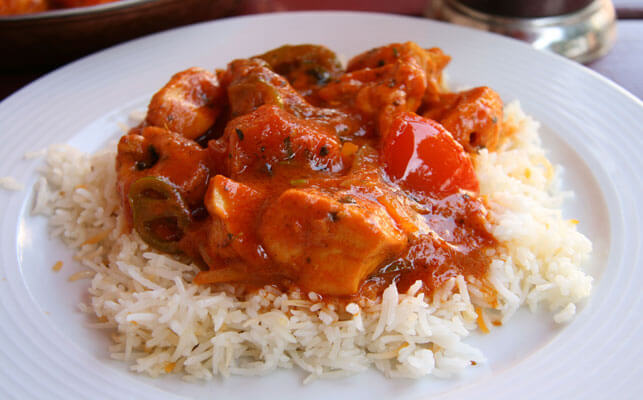
Ah – chicken tikka masala! Britain’s favourite dish has long been a fixture on menus in Indian restaurants from London to Aberdeen. However, did you know that this supposedly Indian dish may have actually been invented in Glasgow?
Chicken tikka masala certainly has some similarities to traditional dishes from the Indian Subcontinent like ‘butter chicken’, but the dish didn’t actually originate there. As the story goes, British Bangladeshi chef Ali Ahmed Aslam served a curry one night to a customer who complained that it was too dry. He came back in the kitchen and added some of his father’s tinned tomato soup to the dish, turning it into a creamy, spicy curry. The customer and his friends loved it, and so the chicken tikka masala was born.
The Kelvingrove Art Gallery and Museum wasn’t really built back-to-front
The Kelvingrove Art Gallery is one of Scotland’s finest art museums, built in beautiful Locharbriggs red sandstone at the turn of the 20th century.
There is a popular story that the building was actually built back-to-front, with the entrance at the wrong side, and that one of the architects was so devastated by this that he threw himself from the roof of the finished building. However, this is an urban myth – the entrance was always intended to be facing into Kelvingrove Park, as part of the celebrations for the Glasgow International Exhibition in 1901.
Glasgow is home to the remains of St Valentine
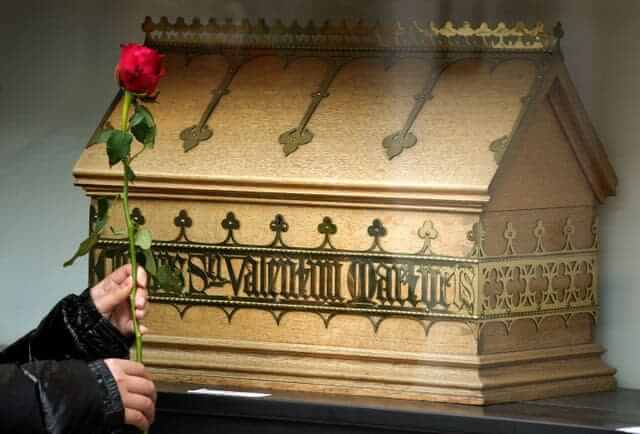
This is a surprising fact about Glasgow. Did you know the bones of the patron saint of lovers, Saint Valentine, can be found in the Church of Blessed St John Duns Scotus. The remains, housed in a small wooden box, are part of a set of relics donated to the Franciscan church in 1868.
Saint Valentine is actually a rather mysterious figure – there seem to have been a number of early Christian martyrs known as Valentine, and several stories and traditions were probably amalgamated in order to create the lover’s feast day that we celebrate today. Regardless of whose bones actually lie in the chapel, the friars decorate the relics with flowers every year on the 14th of February, and dedicate their prayers to lovers around the world.
Glasgow is the home of international football
Scotland might not rank highly in international football these days, but this Scottish city is actually the birthplace of the beautiful game! In 1872 the first international football match (association rules, of course) took place between England and Scotland at the West of Scotland Cricket Ground in Partick. Happily, the game was a 0-0 draw, so it didn’t create any diplomatic incidents!
Glasgow means ‘green hollow’ in Celtic
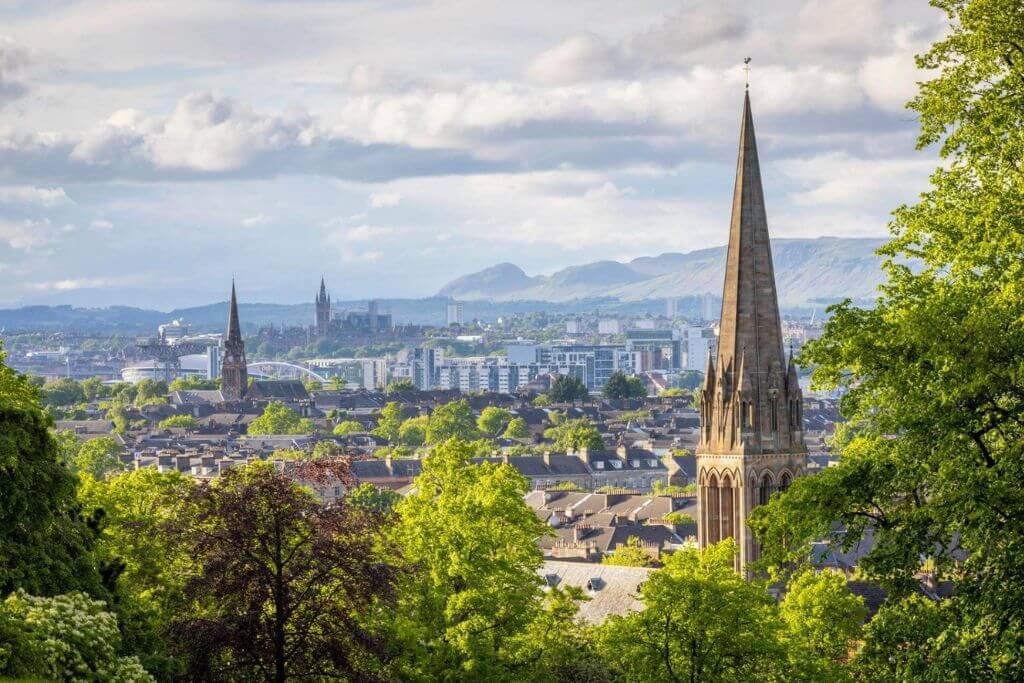
The name Glasgow is thought to have originated from the phrase ‘dear green place’ in Gaelic. This is actually a popular misconception, although the nickname has stuck around for centuries.
In fact, Glasgow comes from the Brittonic ‘glas’ (grey-green) and ‘cöü’ (hollow), which is thought to refer to the grassy ravine that lies to the east of Glasgow cathedral.
Glasgow is the cultural capital of Scotland
Although Edinburgh is famous for its many festivals, including the annual Fringe Festival in August, Glasgow is the undisputed capital of Scottish culture. There are more than 20 museums and art galleries in Glasgow, featuring works by some of the world’s most famous artists.
If you spend a weekend in the city, you’ll have the chance to gaze upon beautiful works of art by Van Gogh, Salvador Dali, and Claude Monet as well as plenty of lesser-known gems. Plus, venture out onto the streets and you’ll see plenty of amazing murals. Many of Glasgow’s museums are entirely free to the public, making this this largest civic arts collection in Europe. Glasgow is also known throughout the world for its music and theatre scene, and is packed with cultural, musical and artistic organisations.
Criminals used to be banished to Glasgow
The area south of the Clyde is known as the Gorbals, and this historic settlement didn’t actually become part of Glasgow until the 19th century.
Up until the late 18th century, the magistrates of the Gorbals used to banish criminals to the north of the Clyde as a punishment, exiling them to Glasgow in order to rid the Gorbals of miscreants, robbers and drunkards.
The city launched the career of Stan Laurel
Laurel and Hardy are one of the world’s most famous comedy duos, seamlessly blending British and American humour to create some legendary Hollywood moments. However, few people realise that Stan Laurel was actually a Glasgow resident in the early 1900s and made his stage debut at the Panopticon Theatre, in Trongate, just before his 16th birthday in 1906.
This magnificent theatre is actually the oldest surviving music hall in the world, and was famous for the rivets on the floor, which could be hurled at acts that didn’t earn the admiration of Glasgow audiences. Luckily, Laurel seems to have been a hit, and went on to become one of the city’s finest movie exports.
There is a miniature Statue of Liberty in the Glasgow City Chambers
The figure on top of the pediment of the Glasgow City Chambers bears a striking resemblance to New York’s Statue of Liberty. Although local residents affectionately call the statue by this name, she is actually intended to be a representation of ‘Truth’. This proud statue is flanked by two other figures, representing riches and honour.
We hope you’ve enjoyed learning more about this Scottish city in our favourite fun facts about Glasgow!
